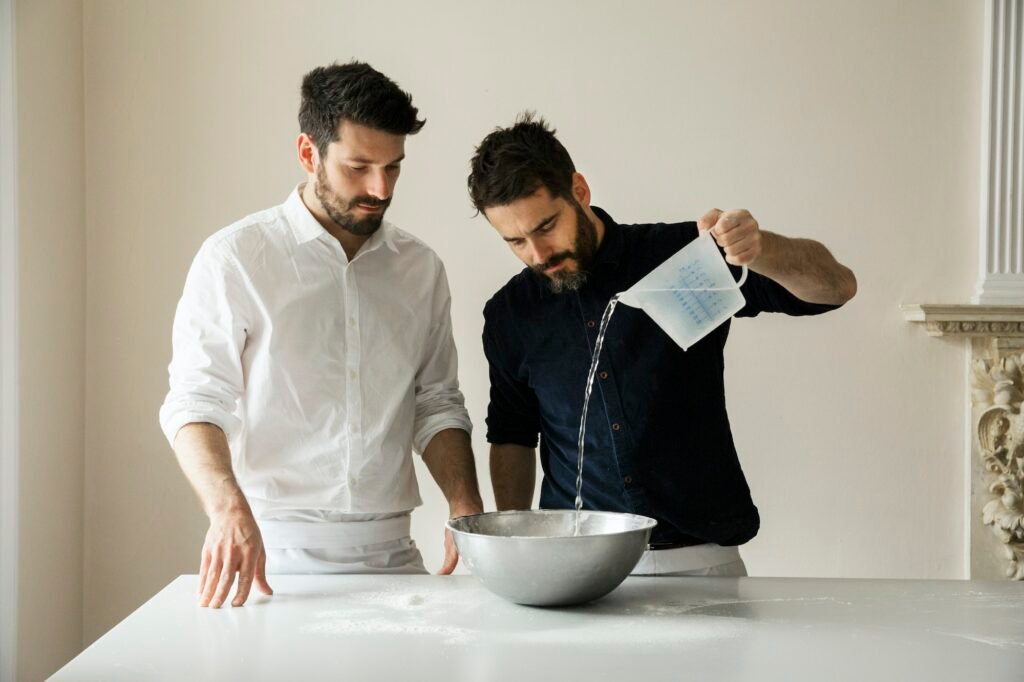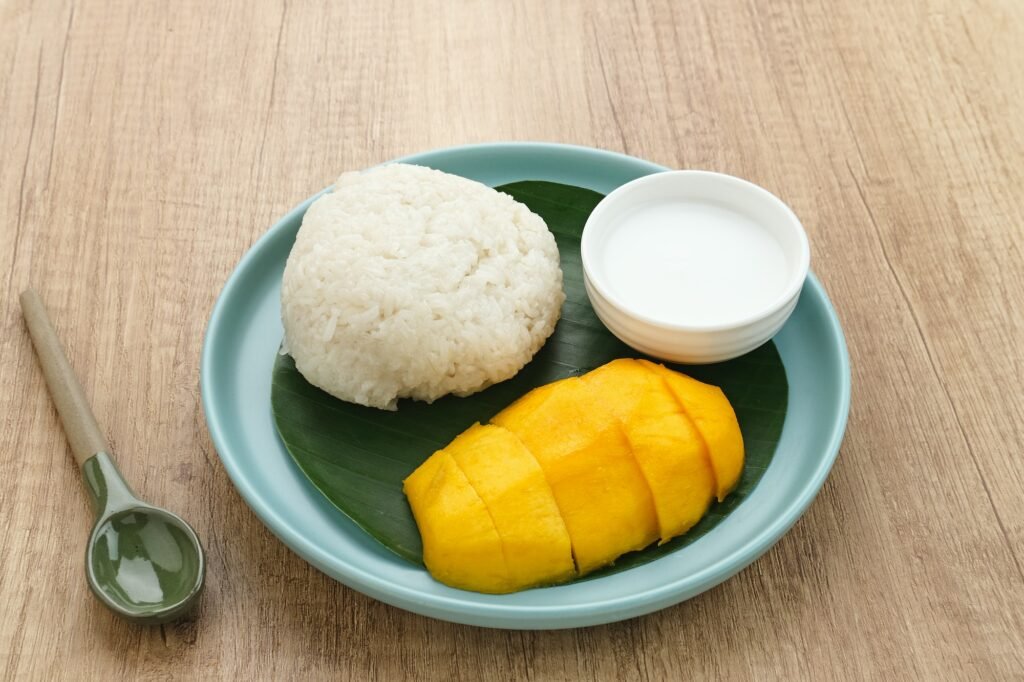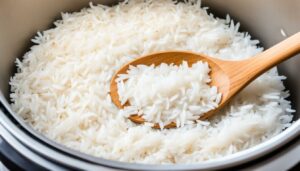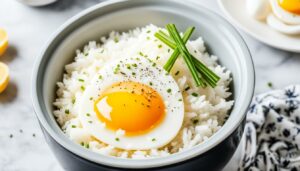As experienced chefs already know, there is science behind cooking rice, and understanding the principles of steam, pressure, and timing can result in consistently delicious rice dishes.
In this section, we will explore this science, unraveling the mystery of how steam, pressure, and timing affect the final product.
Table of Contents
The Importance of Water to Rice Cooking
As you might expect, water is a fundamental element in rice cooking, and the right amount of water is essential for achieving the desired textures and flavors in cooked rice.
Rice grains absorb water and expand during the cooking process, making it important to use a specific amount of water proportionate to the quantity of rice being cooked.

The ratio of water to rice can vary based on the rice variety and desired texture. In general, a ratio of 1:1.5 or 1:2 (rice to water) is appropriate, with more water resulting in softer and stickier rice.
However, it’s not just the amount of water that matters, but also the quality of the water.
Using clean, fresh water can enhance the flavor of the rice. Hard water with high mineral content may affect the texture and taste of the rice, requiring adjustments to the cooking process or the use of distilled water.
The Role of Steam in Rice Cooking
Like water, steam also plays a crucial role in rice cooking, allowing the rice to cook evenly and thoroughly.
As the water turns to steam, it penetrates the rice grains, causing them to expand and soften. This process is essential to breaking down the starches in the rice and creating the desired texture and flavor.
The amount of steam used in rice cooking can significantly impact the final result. Too little steam can result in undercooked rice, while too much steam can cause the rice to become mushy or overcooked. It’s important to find the right balance to achieve perfectly cooked rice.
To ensure proper steaming, it’s essential to keep the lid on the rice pot throughout the cooking process, preventing steam from escaping. This allows the rice to absorb the necessary moisture and heat, resulting in the desired cooked texture and flavor.
The Science Behind Steaming
When the rice pot is heated, the water in the pot turns to steam, causing the pressure in the pot to build.
This pressure forces the steam into the rice grains, allowing the rice to cook evenly. As the rice absorbs the steam, it releases starches, causing the grains to stick together and creating a fluffy, cohesive texture.

For the scientists out there, here’s what the Ideal Gas Law, which governs this process looks like:
i.e PV=nRT
Where:
- P is the pressure of the gas.
- V is the volume of the gas.
- n is the number of moles of the gas.
- R is the universal gas constant.
Clever stuff!
Wha this means ion the kitchen is that uUndersteaming can result in undercooked or unevenly cooked rice, while oversteaming may lead to mushy or overcooked rice. The optimal steaming time varies depending on the rice variety and the amount of water used.
Overall, steam plays a vital role in rice cooking, allowing the rice to cook evenly and thoroughly while creating the desired texture and flavor. Proper steaming techniques and timing can make all the difference in achieving perfectly cooked rice.
Understanding Pressure Cooking and Rice
Pressure cooking is a popular method for cooking rice, especially in Asian cuisine. This technique requires a special pressure cooker that seals the pot to contain steam pressure, cooking rice faster and more efficiently.
The pressure cooker works by boiling the water in the pot, which generates steam and pressure. The trapped steam and pressure cook the rice more quickly than conventional stovetop cooking, reducing cooking time by half or even less, depending on the rice variety.
Furthermore, the high pressure and temperature facilitate the gelatinization of starch in the rice grain, contributing to its final texture. The gelatinization process causes the starch to absorb water and swell, making the grain tender and soft.
Pressure-cooked rice is moister than boiled rice and tends to stick together more. Therefore, it is ideal for making sushi or other rice-based dishes that require a stickier texture. However, this method may not be suitable for all rice varieties, as some may require a more delicate cooking process to preserve their unique texture and flavor.
In summary, pressure cooking is a quick and efficient technique for cooking rice that produces tender and moist grains. However, it may not be ideal for all rice varieties, and it requires a specific tool and knowledge to achieve optimal results.
The Impact of Timing on Rice Cooking
Timing is crucial in rice cooking, as it can significantly impact the final quality of the dish. Different rice varieties require different cooking times, depending on their texture, age, and processing. For example, white rice typically cooks in 18-25 minutes, while brown rice may need up to 50 minutes to fully cook.
Cooking rice for too long can result in mushy or overcooked rice while undercooking it can leave it hard or crunchy. The optimal cooking time also depends on the amount of water used, the cooking method employed, and the desired texture of the rice.
The use of a rice cooker or instant pot can make timing easier by providing preset cooking times for different rice varieties. However, it’s still essential to monitor the cooking process and adjust the time as needed to achieve the desired result.
When cooking rice on the stovetop, it’s important to keep the heat consistent, so the rice cooks evenly and thoroughly. It’s also important to let the rice rest for a few minutes after cooking to allow excess steam to escape and the grains to settle.
Overall, timing is a crucial element in rice cooking that requires attention and care to achieve the desired result.
The Role of Cooking Factors in Rice Absorption
The absorption of water by rice during cooking is affected by several factors, including:
- Type of rice
- Rice to water ratio
- Cooking method
- Physical state of rice grains
The type of rice determines its absorption capacity and cooking time. For example, long-grain rice needs less water and shorter cooking time than short-grain rice. The ratio of rice to water used also affects absorption. A general rule of thumb is to use 1.5 to 2 cups of water per cup of rice, depending on the rice variety.
The cooking method can also impact rice absorption. For example, pressure cooking requires less water than regular stovetop cooking. Additionally, the physical state of the rice grains can affect absorption. Intact, unbroken grains absorb water more slowly than broken grains.
To achieve perfectly cooked rice, it’s essential to consider these factors and adjust the cooking process accordingly. By understanding how these cooking factors affect rice absorption, you can achieve consistent results and delicious rice dishes.
The Science of Fluffy Rice
Fluffy rice is a hallmark of well-cooked rice, but what makes it so irresistible? The secret to fluffy rice lies in the texture of the individual rice grains. When cooked, the grains should be tender and separate, not clumpy or sticky.
There are several factors that contribute to achieving fluffy rice:
- Rice variety: Certain rice varieties, such as basmati and jasmine, are naturally more fluffy when cooked due to their lower starch content.
- Water ratio: Using the appropriate amount of water is key to achieving the perfect texture. Too much water can make the rice mushy, while too little water can leave the grains hard and undercooked.
- Cooking method: The cooking method can also affect the fluffiness of the rice. For example, the absorption method, where rice is cooked in a measured amount of water with the lid on, can lead to fluffier rice compared to the boiling method, where rice is cooked in excess water that is drained off afterward.
When cooking fluffy rice, it’s essential to consider these factors and adjust accordingly. With the right rice variety, water ratio, and cooking method, you can achieve that sought-after fluffy texture in your rice dishes.
The Alchemy of Sticky Rice
Sticky rice is a staple in many cuisines, particularly in Southeast Asia. This type of rice has a unique texture that makes it perfect for dishes like sushi, rice pudding, and mango sticky rice.
So, what makes sticky rice sticky? The answer lies in the rice’s high amylopectin content. Amylopectin is a type of starch that is responsible for the stickiness of rice. Sticky rice contains more amylopectin than other types of rice, making it particularly sticky when cooked.

To achieve the ideal texture of sticky rice, the rice must be soaked before cooking. Soaking the rice allows the grains to absorb water and ensures even cooking. Typically, sticky rice is soaked for at least four hours, but some recipes call for soaking overnight.
Once the rice is soaked, it is drained and rinsed before cooking. Sticky rice is traditionally cooked using a bamboo steamer basket, which allows the steam to penetrate the rice grains evenly. The rice is steamed for about 20 minutes, depending on the recipe.
One crucial factor to keep in mind when cooking sticky rice is the ratio of water to rice. Sticky rice requires less water than other types of rice because it is intended to be sticky, not fluffy. Typically, the ratio of water to rice for sticky rice is 1:1.25, or one and a quarter cups of water per cup of rice.
Overall, cooking sticky rice requires a bit more attention to detail than other types of rice. Still, with the right soaking, rinsing, and steaming techniques, you can achieve perfectly sticky rice every time.
Beyond White Rice: Cooking Different Varieties
Cooking rice is a universal practice, but the types and varieties of rice used in recipes can vary significantly. Cooking different rice varieties may require specific techniques to achieve optimal results. Here’s a guide to help you cook different rice varieties:
Brown Rice
Brown rice is a whole grain rice that retains its bran and germ layers, making it more nutritious than white rice. However, it also takes longer to cook and requires more water. Here’s how to cook brown rice:
| Rice Variety | Water Ratio | Cooking Time (minutes) | Resting Time (minutes) |
|---|---|---|---|
| Brown Rice | 2 cups water for every 1 cup rice | 40-50 | 10 |
When cooking brown rice, make sure to rinse the rice before cooking to remove excess starch. After cooking, let the rice rest for 10 minutes before fluffing it with a fork. This resting time helps redistribute the moisture, resulting in fluffy, evenly cooked rice.
Wild Rice
Wild rice is not technically rice but rather a type of grass seed. It has a complex, nutty flavor and a chewy texture and is commonly used in pilaf and salad recipes. Here’s how to cook wild rice:
| Rice Variety | Water Ratio | Cooking Time (minutes) | Resting Time (minutes) |
|---|---|---|---|
| Wild Rice | 3 cups water for every 1 cup rice | 45-60 | 10-15 |
When cooking wild rice, you’ll need to use more water than with other rice varieties. Bring the water to a boil, add the rice, and simmer until the water is absorbed and the rice is tender. Let the rice rest for 10-15 minutes before serving.
Jasmine Rice
Jasmine rice is a fragrant, long-grain rice that is popular in Thai and Southeast Asian cuisine. When cooked, it has a sticky texture and a subtle floral aroma. Here’s how to cook jasmine rice:
| Rice Variety | Water Ratio | Cooking Time (minutes) | Resting Time (minutes) |
|---|---|---|---|
| Jasmine Rice | 1.5 cups water for every 1 cup rice | 18-20 | 5 |
When cooking jasmine rice, use a little less water than with other rice varieties to achieve a slightly sticky texture. After cooking, let the rice rest for 5 minutes before fluffing it with a fork.
By following these guidelines, you can cook a variety of rice types and achieve perfect results every time.
Conclusion
After understanding the science behind rice cooking, it is evident that achieving perfectly cooked rice requires attention to detail. Steam, pressure, timing, water, and absorption are all crucial factors that affect the final result.
By following the optimal cooking times for different rice varieties and understanding the impact of undercooking or overcooking, you can elevate your rice cooking skills. Consistently achieving fluffy or sticky rice requires an appreciation of the scientific principles behind rice cooking.
Experimenting with different rice varieties may require specific techniques, but by understanding the scientific principles, you can optimize the cooking process and achieve optimal results. As with any skill, practice makes perfect, and with dedication and attention to detail, you can master the art of rice cooking.
FAQ
Q: What is the science behind rice cooking?
A: Rice cooking involves the principles of steam, pressure, and timing to achieve the desired final result.
Q: Why is water important in rice cooking?
A: Water is fundamental in rice cooking as it helps to achieve the desired textures and flavors in cooked rice.
Q: How does steam play a role in rice cooking?
A: Steam penetrates the rice grains, facilitating the cooking process and contributing to the final result of perfectly cooked rice.
Q: What is the relation between pressure cooking and rice?
A: Pressure cooking is a popular method for preparing rice and affects its texture and taste.
Q: How does timing impact rice cooking?
A: Timing is crucial in rice cooking, as different rice varieties require specific cooking times for optimal results.
Q: What factors affect rice absorption during cooking?
A: Several factors, such as rice variety and cooking method, can affect the absorption of water by rice during cooking.
Q: What makes rice fluffy?
A: Achieving fluffy rice involves understanding the scientific principles behind steam, pressure, and timing in the cooking process.
Q: How can sticky rice be achieved?
A: Sticky rice requires specific cooking techniques that promote the characteristic stickiness of the grains.
Q: Are there different cooking methods for various rice varieties?
A: Yes, cooking different rice varieties, such as brown rice or wild rice, may require specific techniques to achieve optimal results.








